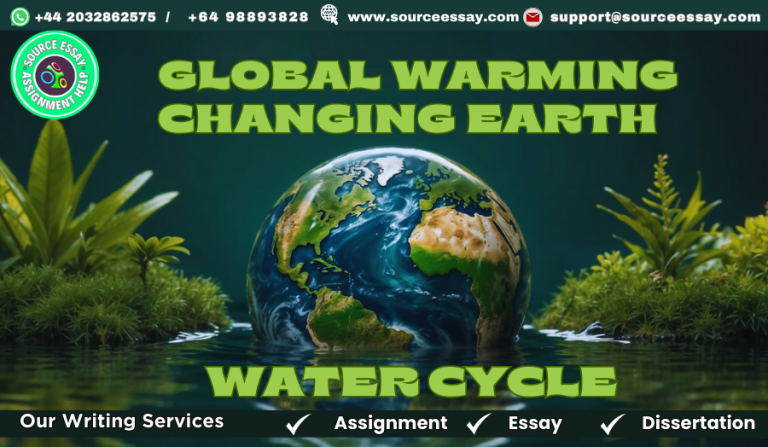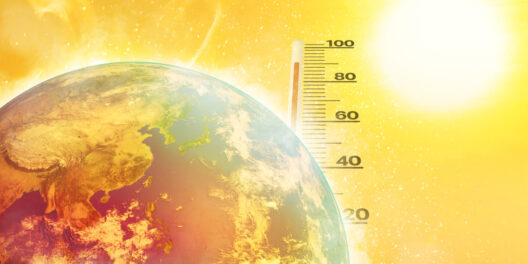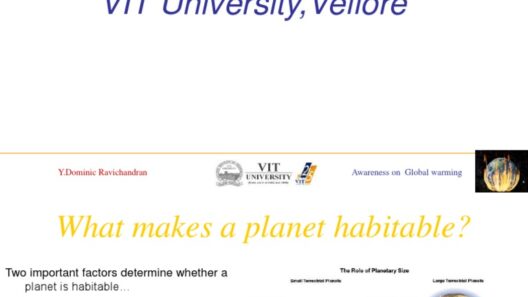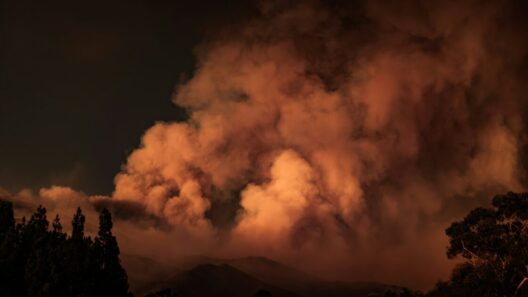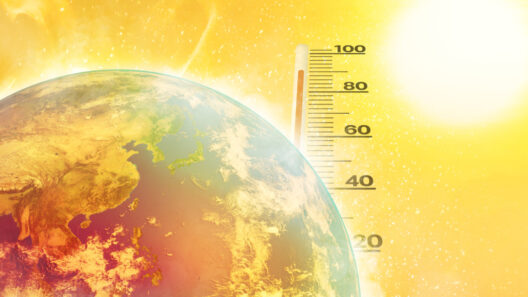The intricate interplay between global warming and the water cycle is a subject of considerable importance and fascination. As the Earth’s climate warms, one naturally questions the implications for one of the planet’s most vital systems: the water cycle. This cycle, comprising evaporation, condensation, precipitation, and runoff, is essential for sustaining life and influencing weather patterns. However, can global warming actually slow down this crucial cycle? To answer this question, we must analyze the components of the water cycle, the effects of a warming climate, and the potential long-term ramifications on ecosystems and human societies.
At its core, the water cycle is driven by solar energy, facilitating the movement of water in various forms—vapor, liquid, and ice—throughout the environment. Typically, the cycle operates with a delicate balance. Water evaporates from oceans and surfaces, condenses in the atmosphere to form clouds, and eventually precipitates as rain or snow, replenishing rivers, lakes, and groundwater supplies. However, the escalation of global temperatures alters this balance in profound and sometimes counterintuitive ways.
One of the primary effects of global warming is the increase in evaporation rates. With higher temperatures, water bodies lose their moisture more rapidly, leading to increased humidity in the air. While this seems to imply a more vigorous water cycle, the reality is more complicated. Increased evaporation can lead to drier conditions in some regions. When evaporation outpaces precipitation, areas may experience drought, which can stagnate the water cycle in those localities.
Furthermore, rising temperatures can accelerate the melting of glaciers and polar ice caps, releasing vast amounts of freshwater into the oceans. While this may initially seem beneficial, it disrupts the salinity and temperature gradients that drive ocean currents, critical components of the global climate system. As ocean currents slow or shift, this can lead to altered weather patterns and even extended droughts in certain regions, which may further exacerbate the slowing of the local water cycle.
The interaction between increased temperatures and the capacity of the atmosphere to hold moisture also plays a crucial role. Warmer air can contain more water vapor, which may lead to intense precipitation events in some areas. Yet, paradoxically, the overall increase in temperature may not guarantee a corresponding increase in rainfall, particularly in already arid regions. These disparities can create an irregular water cycle where some areas experience flooding while others suffer from catastrophic drought.
Climate change also influences the timing and distribution of precipitation. Seasonal shifts may occur, leading to a mismatch between the availability of water throughout the year and the needs of both ecosystems and agricultural systems. As farmers rely on predictable weather patterns to sow and harvest crops, erratic rainfall can result in significant agricultural stress, which in turn affects food security on a global scale. This unpredictability can hinder the traditional agricultural practices that communities depend on, thereby affecting livelihoods.
Some scientists argue that global warming might alter the characteristics of the water cycle in ways that lead to a slow-down of the process overall. For example, the disruption of ecosystems can lead to reduced transpiration—the release of water vapor from plants into the atmosphere. Healthy forests and vegetation play a significant role in maintaining local water cycles by recycling water through transpiration. Deforestation, exacerbated by climate change, can thus have damaging effects on the water cycle, leading to lower humidity levels and less precipitation.
Moreover, feedback loops may emerge as global warming continues. For instance, as certain regions become drier due to increased temperatures, the reduction of moist surfaces can lead to less evaporation and, ultimately, decreased precipitation. This may create a scenario where some areas become locked into a cycle of aridity, suffering from both diminished water availability and slower water cycle dynamics.
Urbanization and land use changes further complicate the situation. Cities tend to have more impervious surfaces, which can decrease natural water absorption and exacerbate runoff. As cities expand and climates warm, the “heat island” effect may intensify, leading to localized alterations in the water cycle. Urban areas might experience flash flooding during severe weather events, while surrounding rural regions might face prolonged dry spells, further compounding the issue.
As policymakers and scientists explore adaptations for a changing climate, understanding the nuances of the water cycle is paramount. Mitigating the impacts of global warming on water cycles means recognizing the importance of sustainable land management, reforestation, and innovative agricultural practices. By supporting the resilience of both urban and natural ecosystems, society can work to maintain the balance of the water cycle despite the challenges posed by climate change.
In conclusion, while global warming presents a complex and multifaceted threat to the water cycle, the extent to which it can be said to “slow” the cycle is contingent upon numerous interconnected factors. The interactions at play reveal the delicate equilibrium of the Earth’s systems and the imperative need for informed action. Addressing the challenges of a warming climate requires not only understanding these intricate dynamics but also fostering sustainable practices to promote resilience within the water cycle. Assessing the reality of these changes will be critical in shaping effective environmental policies that serve both humanity and the planet.



